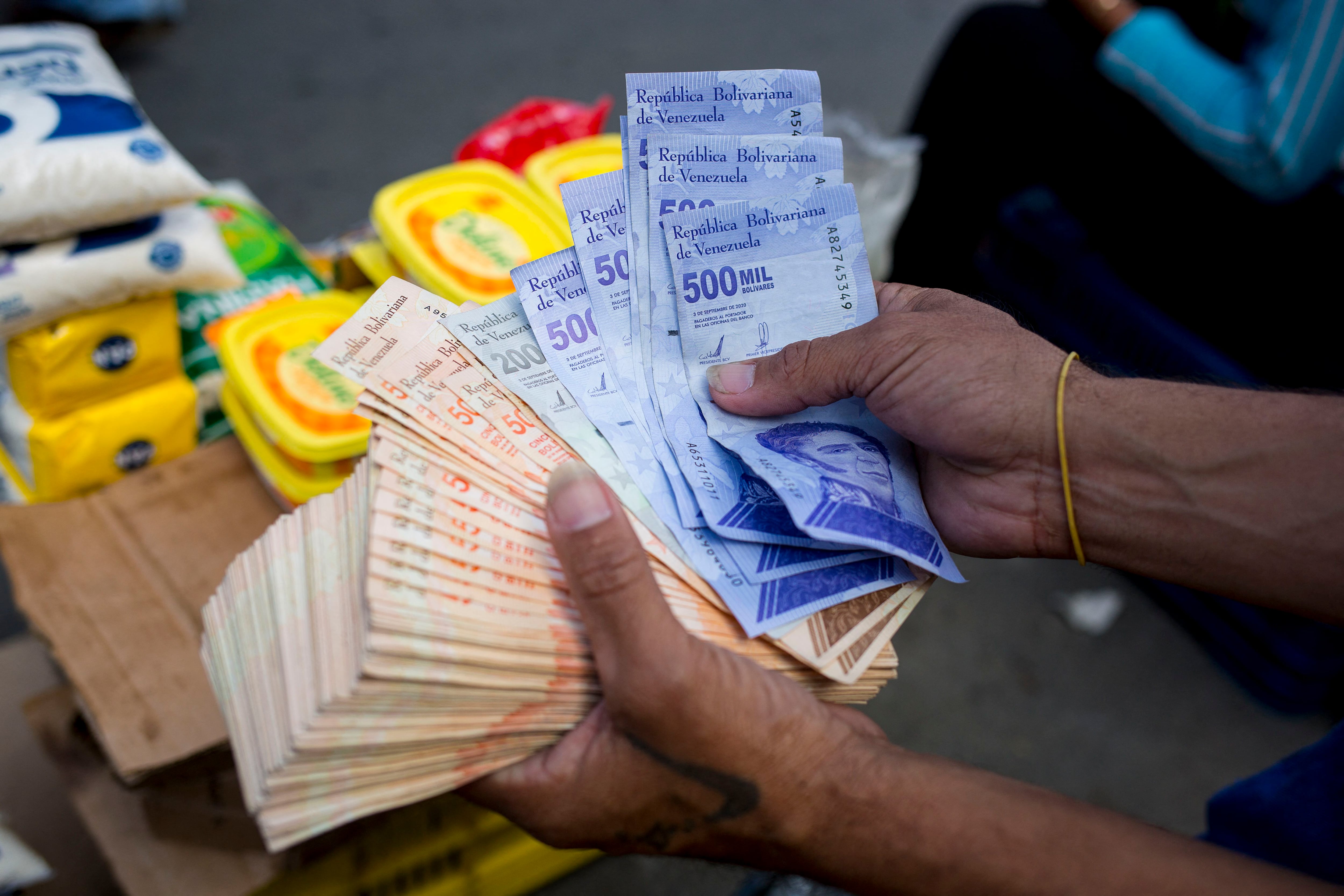
Venezuela is looking to boost its currency after the launch of a new version of the bolivar with six less zeros it caused prices to rise.
The central bank injected around US $ 40 million a week into the foreign exchange market following the October 1 introduction of the so-called digital bolivar. That’s roughly double the amount you normally send to banks.
So far it has worked. The exchange rate on the street, known as the parallel market, was 4.1 bolivars per dollar on Tuesday. The currency had weakened to 5.2 per dollar before the introduction of the digital bolivar, while Venezuelans scrambled to get greenbacks.
In Caracas, the deployment of the new currency was accompanied by a sharp increase in prices. The cost of a basket of eight commodities rose 13.7% the week the coin was launched, the second-highest weekly increase of the year, according to the opposition-led Finance Observatory. However, after the intervention of the central bank, the price of the basket returned to pre-conversion levels, said opposition lawmaker Ángel Alvarado, founder of the observatory.
“The question is whether the central bank has enough cash to maintain this policy and, therefore, if it is worth it,” Alvarado said.
In September, international reserves were at a 30-year low as the government sold gold for much-needed cash. Last month, the central bank added US $ 5 billion to its reserve level, an amount that corresponds to the borrowing rights assigned by the International Monetary Fund. However, Venezuela cannot access IMF funds because members have not agreed on who is the legitimate leader of the country.
Since 2017, Venezuelans have battled hyperinflation. Although price increases slowed this year, they remain sensitive to exchange rate volatility. The value of the bolivar eroded to the point that accounting systems could no longer support long figures.
The redenomination of the currency, the third since 2008, was aimed at facilitating business transactions. The government introduced a family of new coins and bills, the largest, for 100 bolivars, with a value of around US $ 24.
However, since banks have mainly been supplying the lower denominations of 5 and 10 bolivars, dollars continue to dominate most cash transactions, even in low-income sectors.
Fearing the volatility of the bolivar, Adrian Vegas keeps the prices of products in dollars in his small store on the outskirts of Petare, a poor neighborhood in Caracas.
“Imagine having to change prices in bolivars every day,” he said.
The government of Nicolás Maduro had already let the economy head towards unofficial dollarization and now bolivars are used mainly to pay for services such as public transportation or subsidized gasoline.
“People see a price and don’t even think about the digital bolivar. Think in dollars, ”said José Estrada, manager of a butcher shop. Still, he said this latest currency conversion was “easier” because before the conversion, even the most basic commodities were priced at several million bolivars.
However, that could be short-lived, unless the government is able to control inflation, said José Manuel Puente, an economics professor at the Center for Public Policy at the Institute for Higher Education in Management (IESA).
“Currency conversions are cosmetic measures that have no effect on revenue, expenses or the macroeconomic environment,” he noted. “Eventually, the zeros that were removed are recovered.”
.
Ricardo is a renowned author and journalist, known for his exceptional writing on top-news stories. He currently works as a writer at the 247 News Agency, where he is known for his ability to deliver breaking news and insightful analysis on the most pressing issues of the day.












